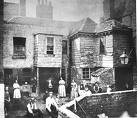Victorian Literature Lesson: An Easy Guide
Lesson Overview
- What Is Victorian Literature?
- Victorian Era Overview
- Major Victorian Authors and Notable Works
- Key Characteristics of Victorian Literature
- Literary Devices and Forms
Victorian literature is a rich field, and by studying this lesson you will gain a broad understanding of its historical context, major figures, and defining characteristics. This lesson will guide you through key authors, works, and literary concepts of the Victorian age.

What Is Victorian Literature?
Victorian literature refers to English literature produced during the reign of Queen Victoria (1837–1901). This era was a transformative period in Britain, experiencing rapid industrialization, scientific advancements, and shifts in social structure. Literature of the time mirrored these changes, focusing on realistic portrayals of society and pressing social issues. The Victorian era saw the rise of the novel to dominance and included remarkable poets who explored faith, love, and morality in their verse.
Victorian Era Overview
The Victorian era (1837–1901) was a time of significant change in Britain. Literature responded to the world around it, reflecting the hopes, fears, and conflicts of 19th-century society.
From Romanticism to Realism
The Romantic era emphasized individual emotion and imagination, while Victorian literature turned its eyes outward, focusing on society. A hallmark of Victorian writing is realism-an effort to portray life truthfully, including social issues such as poverty and inequality. Many Victorian novels address the difficult conditions of the working class and call for social reform.
Industrialization and Social Issues
Victorian Britain was the first industrialized nation, and rapid urbanization created new social problems. Victorian literature often grapples with themes of class struggle, industrial poverty, and social justice. Charles Dickens, for example, wrote about orphans, workhouses, and debtor's prisons in Oliver Twist and Hard Times. Similarly, Elizabeth Gaskell and George Eliot depicted the hardships of ordinary people and critiqued the social class system.
The Dominance of the Novel
While poetry and drama continued to be written, the novel emerged as the dominant literary form in the Victorian age. Improved literacy and cheap printing made books widely accessible. Victorian novels were often published serially, influencing how they were written with complex plots and cliffhanger endings.
Victorian Poets and Thinkers
Alongside novelists, the Victorian era boasted influential poets and essayists. Alfred, Lord Tennyson wrote emotionally rich poetry reflecting philosophical and social themes. Robert Browning and Elizabeth Barrett Browning pioneered the dramatic monologue. Gerard Manley Hopkins experimented with innovative rhythms and language, while Matthew Arnold explored faith and doubt in his poetry. Essayists like Thomas Carlyle, John Ruskin, and Arnold wrote about moral and social questions of the day.
Women Writers in a Male-Dominated World
Women authors rose to prominence despite obstacles. Early on, many used male pseudonyms. Mary Ann Evans wrote as George Eliot (Middlemarch, Silas Marner), and the Brontë sisters (Charlotte, Emily, and Anne) initially published under male pen names. By the later Victorian years, female authors were
more widely accepted, contributing to the richness of Victorian literature.
Take This Quiz:
Major Victorian Authors and Notable Works
Charles Dickens (1812–1870)
Notable works: Great Expectations, A Christmas Carol, Oliver Twist, David Copperfield, Bleak House, A Tale of Two Cities, Hard Times.
Dickens' novels often combine social critique with memorable characters and dramatic plots, using humor and satire to highlight social injustices. His works were frequently serialized, leading to intricate, engaging narratives.
George Eliot (Mary Ann Evans, 1819–1880)
Notable works: Middlemarch, Silas Marner, Adam Bede, The Mill on the Floss.
Eliot's novels are known for their deep psychological insight and realistic portrayals of country life. Her works explore themes of duty, religion, and societal expectations.
The Brontë Sisters
- Charlotte Brontë – Jane Eyre
- Emily Brontë – Wuthering Heights
- Anne Brontë – The Tenant of Wildfell Hall
The Brontës blended gothic elements with sharp social commentary, critiquing class prejudice and Victorian gender norms.
Alfred, Lord Tennyson (1809–1892)
Notable works: The Lady of Shalott, Ulysses, In Memoriam, The Charge of the Light Brigade.
Tennyson was the Poet Laureate for much of Queen Victoria's reign. His poetry is known for its emotional depth, rich imagery, and reflective quality.
Robert Browning & Elizabeth Barrett Browning
- Robert Browning – My Last Duchess (dramatic monologue)
- Elizabeth Barrett Browning – Sonnet 43 (How do I love thee?)
Elizabeth's poetry often focuses on love and social injustice, while Robert's poetry is known for its dramatic monologues exploring psychological depth.
Thomas Hardy (1840–1928)
Notable works: Tess of the D'Urbervilles, Jude the Obscure.
Hardy's novels critique societal and moral constraints of Victorian society, often featuring tragic outcomes.
Other Noteworthy Victorian Writers
- Lewis Carroll – Alice's Adventures in Wonderland
- William Makepeace Thackeray – Vanity Fair
- Bram Stoker – Dracula
- Robert Louis Stevenson – Treasure Island, Dr. Jekyll and Mr. Hyde
- Wilkie Collins – The Woman in White, The Moonstone
Key Characteristics of Victorian Literature
- Realism and Social Critique: Addressing social issues such as poverty, class struggle, and morality.
- Heavy Description and Pictorial Detail – Rich imagery and long descriptive passages.
- Complex Plots and Multi-Plotting – Multiple storylines interwoven within a single novel.
- Publishing in Serial Form – Chapters published in installments, leading to suspenseful endings.
- Faith vs. Science – Exploration of religious beliefs in light of scientific discoveries.
- Sentimentality and Idealized Virtue – Emotional depth and moral lessons embedded in stories.
Literary Devices and Forms
- Alliteration – Repetition of consonant sounds.
- Assonance – Repetition of vowel sounds.
- Dramatic Monologue – A poem in which an imagined speaker addresses a silent listener.
- Petrarchan Sonnet – A 14-line poem with a volta (shift in theme or argument).
Rate this lesson:
 Back to top
Back to top
